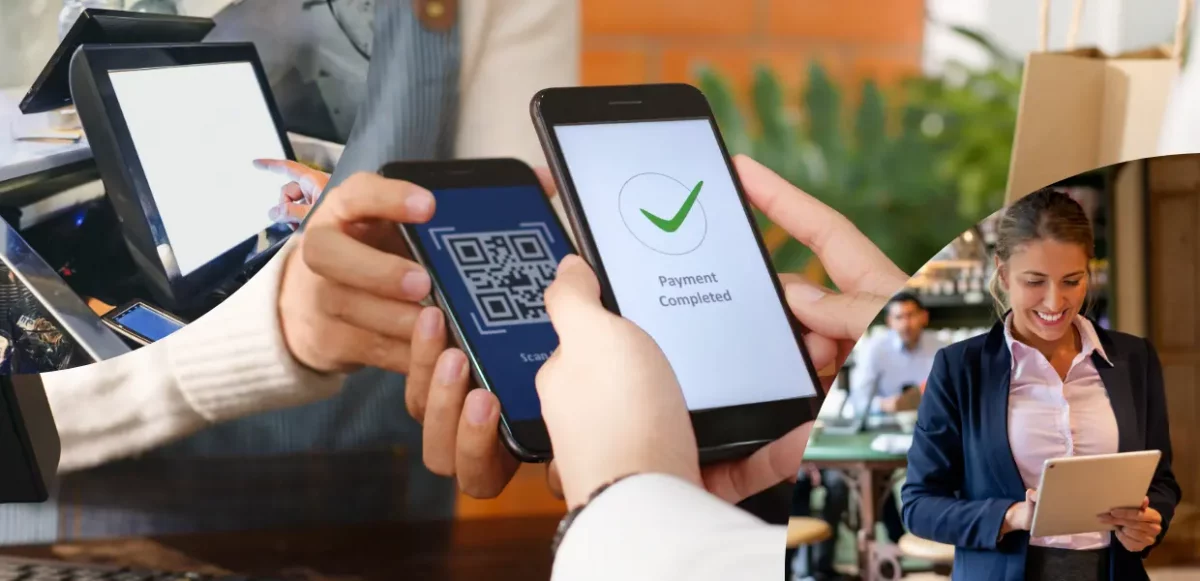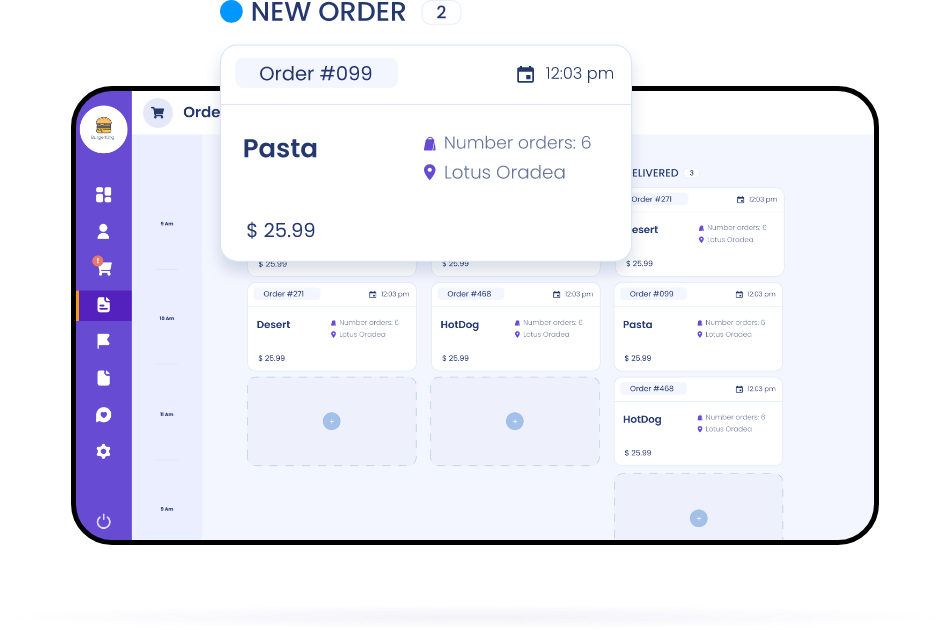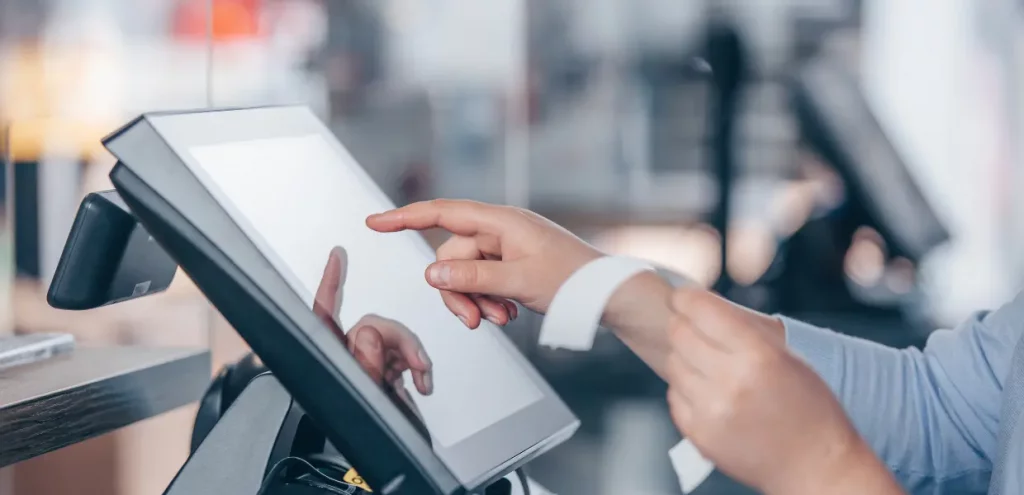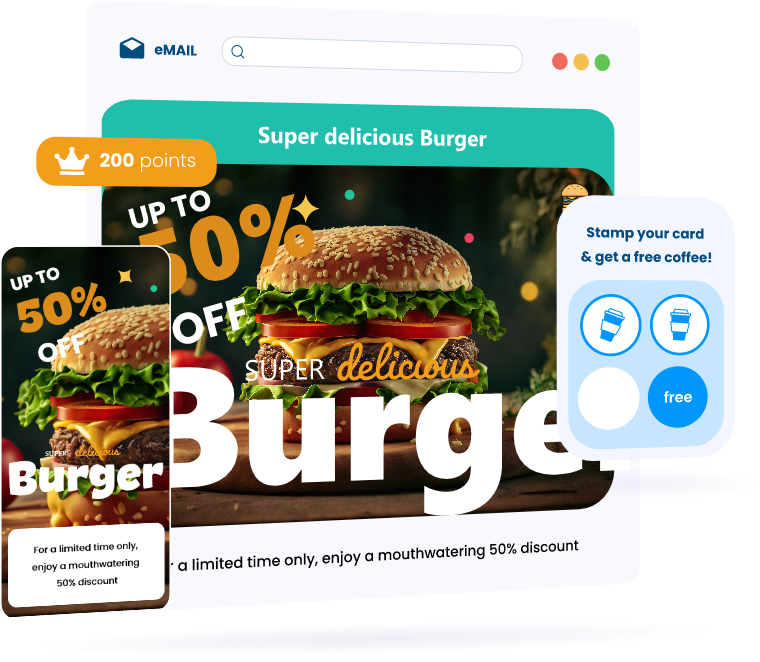All Articles
12 Types of Restaurant Technology

Although many owners had already begun integrating restaurant technology into their day-to-day operations, the COVID-19 pandemic was the pivotal moment that accelerated this process and introduced several new needs. For example, social distancing and minimizing contact with objects highlighted the growing need for contactless payments in every restaurant. Also, online ordering systems became very popular during this time.
However, restaurant technologies existed before COVID-19 and have proven to increase efficiency and meet an ever-growing number of customer needs. Because of this, they have become indispensable for any restaurant. Whether you’re planning to open a new restaurant and are looking for the right technology, or you’re a veteran in the industry aiming to improve certain operations, I’ve prepared a list of 12 types of restaurant technology that will enhance your restaurant.
1. Online Ordering System

These systems have revolutionized the way restaurant customers dine. Using a mobile app or website module, they can choose how to receive their order—whether to have it delivered or picked up—select their desired dishes and place the order. This way, people can enjoy restaurant food from the comfort of their homes, offices, or wherever.
While an online ordering system offers convenience to customers, it also benefits restaurants. Although marketplace applications like Uber Eats or DoorDash provide an option, these platforms charge commissions and group your restaurant with others, limiting your ability to highlight your brand. Instead, having your online ordering system, such as TapTasty, allows you to offer a dedicated mobile application or website for your restaurant. In addition, an online ordering system allows you to take and manage customer orders in a centralized way and create a database of their information that you can later use for marketing purposes.
If you want to learn more about online ordering systems—from what they are and their benefits to how to choose one and which are the best systems—check out this article: Best Online Ordering Systems for Restaurants
2. QR Table Ordering
Most restaurant patrons want the ordering process to be as quick as possible. QR table ordering is the ideal solution to speed things up. Customers simply scan a QR code, choose their items, and pay directly from the table. This minimizes interaction with the waiter and eliminates the wait for the bill. Once they’ve paid via QR table ordering, they can get up and leave at their convenience.
A well-developed QR table ordering system offers several additional functionalities. It allows customers to call the waiter, pay with cash, and order with friends while splitting the bill. These features enhance convenience and flexibility, catering to various dining preferences and improving the overall restaurant experience. If you need such a system, TapTasty would be an excellent choice.
3. Self-Ordering Kiosk
Among the ordering modules that the technology offers to restaurants are self-service kiosks. While these devices are only suitable for certain types of restaurants, such as fast food establishments, where everything needs to move as fast as possible, they have proven highly effective. Here are some of the benefits they bring:
- They streamline operations by automating order processing and integrating seamlessly with kitchen workflows. This reduces errors and speeds up service.
- Moreover, self-service kiosks cut labor costs by minimizing the need for front-of-house staff dedicated to taking orders. Customers place their orders, freeing up resources for other tasks like customer service and food preparation.
- Additionally, these kiosks boost sales through upselling by suggesting additional items or upgrades during the ordering process. This increases the average order value and encourages customers to explore new menu options.
- Furthermore, self-service kiosks reduce wait times by allowing customers to order quickly and efficiently, enhancing overall satisfaction and encouraging repeat visits.
Here is an example of a kiosk:
4. Online Table Reservation
A reservation module helps restaurants manage customer reservations efficiently and accurately. Allowing customers to input their information directly via a website or mobile application eliminates the risk of misunderstandings from phone calls.
Depending on its complexity, an online table reservation module can also allow customers to choose the restaurant area where they want to reserve and specify the number of seats they need. The system administrator can determine the duration of a reservation, set the time necessary for cleaning between reservations, and establish the minimum and maximum number of people who can be seated at a table.
Additionally, well-designed reservation systems provide a clear overview of both reserved and available tables, enabling you to maximize seating capacity and optimize your restaurant’s layout effectively.
5. Inventory Management Software
As the name suggests, inventory management software is a system that allows restaurants to keep track of their inventory, including food and beverage stocks. Its role is to monitor available stocks, notify staff when certain ingredients or drinks are low, and, with the help of AI technology, predict when new stocks will be needed. If integrated with various providers, it can even place orders automatically.
One of the main benefits of such a system is reducing food waste. According to statistics, food waste in America amounts to 92 billion pounds. Every restaurant plays a crucial role in reducing food waste, which benefits the environment and helps lower costs. Additionally, inventory management software aids kitchen staff by storing recipes and automatically calculating ingredients, further enhancing operational efficiency. The system can also generate reports on inventory usage, helping to identify trends and optimize stock levels.
6. Point of Sale System

A point of sale (POS) system is a modern and efficient tool that enables the restaurant team to take customer orders at the counter. This system, comprising both software and hardware components, helps streamline the order-taking process.
Some POS systems also feature a customer-facing screen, allowing customers to review their orders and add tips. When integrated with a card reader, these systems can accept payments via card or phone, further enhancing convenience and efficiency. If you are looking for a POS, consider Toast POS, as it is specifically designed for restaurants.
7. Contactless Payment
As mentioned above, contactless payments, though available for a long time, have become essential since the COVID-19 pandemic. These payments allow customers to simply tap, dip, or swipe to pay for their orders, minimizing physical contact and enhancing safety. In addition to reducing the risk of virus transmission, contactless payments also speed up transaction times and improve the overall customer experience by offering a fast and convenient payment method.
8. Digital Customer Loyalty

Customer loyalty is essential to a successful restaurant. With the advent of technology, restaurant staff no longer need to create printed loyalty cards or manually track loyalty points on various coupons. A digital customer loyalty system, whether part of an online ordering system or a POS system, helps restaurants reward their customers in multiple ways. These include loyalty points, digital loyalty cards, discounts, and customer segmentation based on the value or number of orders. This streamlines the process, enhances accuracy, and provides a more personalized experience for customers.
TapTasty is an online ordering system that can provide your restaurant with great marketing tools. Your customers can keep their loyalty cards in their accounts and earn loyalty points for orders placed through any of TapTasty’s ordering modules (mobile app, web module, kiosk, QR table ordering) and even in-store orders by scanning the receipt in the app. Additionally, you can use the customer segmentation system to create personalized offers.
9. QR Menu
A QR menu is a digital menu accessible by scanning a QR code. Many restaurants have replaced printed menus with this digital variant to enhance customer accessibility. Customers can view the menu with a simple scan and see real-time updates. QR menus are handy for restaurants aiming to reduce costs, as they eliminate the need for reprinting menus whenever they change them.
10. Kitchen Display System
Orders can be communicated to chefs, from traditional pen and paper to thermal printers and the most advanced technological solutions. One such advanced solution is the kitchen display system (KDS). This digital screen allows the back-of-house team to receive orders electronically, update the status of each dish from “in progress” to “ready,” and notify the waitstaff when the order is ready to be served. This system significantly improves communication between the kitchen and the waitstaff, streamlining operations.
11. Printer
There are two main types of restaurant printers: thermal printers, which use heat to print on special paper for receipts, and impact printers (dot matrix), which use ink ribbons to print on regular paper for order tickets in kitchens. These printers are designed for durability and come with various connectivity options like USB, Ethernet, Wi-Fi, and Bluetooth to integrate with POS systems and kitchen display systems (KDS). They play a crucial role in streamlining operations by quickly and quietly producing essential documents in high-volume environments.
12. Cash Drawer
A cash drawer in a restaurant is an essential component of the point of sale (POS) system, designed to store cash, coins, and receipts during transactions securely. Typically made of durable metal, cash drawers feature compartments for organizing bills and coin trays that facilitate quick and accurate change. They are equipped with a locking mechanism to ensure security, often operated by the cashier or manager using a key or electronic code. Integration with the POS system allows automatic opening when a transaction is completed, streamlining the checkout process and reducing errors in cash handling. Some of the benefits of cash drawers are financial accuracy, security, and efficiency in restaurant operations, ensuring smooth transactions and customer satisfaction.
In conclusion, the types of restaurant technology include online ordering systems, QR table ordering, self-ordering kiosks, online table reservations, inventory management software, point of sale systems, contactless payments, digital customer loyalty programs, QR menus, kitchen display systems, printers, and cash drawers. These technologies offer numerous benefits, such as streamlining operations, enhancing customer convenience, reducing errors, improving order accuracy, optimizing inventory management, and increasing overall efficiency. By integrating these advanced solutions, restaurants can provide a superior dining experience, boost customer satisfaction, and ultimately drive business growth.
If this article has helped you understand the different types of restaurant technology, you are more than welcome to share it with your friends.
 1 July 2024
1 July 2024 6 min read
6 min read

